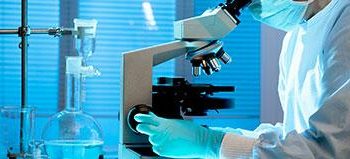Overview:
The study involved four major activities to estimate the current size of the human organoids market. Exhaustive secondary research was carried out to collect information on the market and its different subsegments.
The next step was to validate these findings, assumptions, and sizing with industry experts across the value chain through primary research. Top-down and bottom-up approaches were employed to estimate the complete market size. Thereafter, market breakdown and data triangulation procedures were used to estimate the size of segments and subsegments.
Expected Revenue Growth:
The global human organoids market size is projected to reach USD 1,901 million by 2025 from USD 850 million in 2020, at a CAGR of 17.5% during the forecast period.
Growth Boosting Factors:
The global human organoids market offers significant growth potential for prominent as well as emerging product manufacturers. Technological advancements, rising incidence of transplants, and increased funding and public-private investments are key factors driving the growth of the human organoids market.
Download PDF Brochure@
https://www.marketsandmarkets.com/pdfdownloadNew.asp?id=171046468
Research Methodologies Followed:
Primary Research:
The human organoids market comprises several stakeholders such as Manufacturers of human organoid products, Healthcare service providers, Manufacturers of pharmaceutical products, Pharmaceutical and biotechnology companies, Clinical research organizations (CROs), Clinical testing laboratories, Public and private research organizations, Research laboratories and academic institutes, Market research and consulting firms The demand side of this market is characterized by the increasing incidence of transplants and technological advancements, and increased funding and public-private investments. Various primary sources from both the supply and demand sides of the market were interviewed to obtain qualitative and quantitative information.
Secondary Research:
In the secondary research process, various secondary sources, such as annual reports, press releases & investor presentations of companies, white papers, certified publications, articles by recognized authors, gold-standard & silver-standard websites, regulatory bodies, and databases (such as D&B Hoovers, Bloomberg Business, and Factiva) were referred to in order to identify and collect information for the orthopedic braces and supports market study.
Opportunity: Increasing focus on drug discovery activities
The increasing demand for new and advanced drugs is driving the overall pace of drug discovery and research. This is the major factor responsible for the rising number of clinical trials conducted for studying and commercializing new drugs. According to ClinicalTrials.gov, the total number of clinical trial studies in 2020 was estimated at 356,282.
A recent study conducted by the Hubrecht Institute states that organoids have the potential to make expensive drugs more cost-effective by identifying patients who are not likely to benefit from the drug. The significant growth in the number of clinical trials across the globe is expected to drive the demand for advanced medical technologies, including organoid models.
Challenge: Dearth of skilled professionals
Skilled professionals, such as researchers and technicians, are required to set up and run experiments involving organoids, and further make observations, obtain results, and analyze the obtained data. The lack of knowledge regarding the underlying scientific principles and the right choice of technique may result in several direct and indirect expenses and increase the workload and time pressure on researchers and service providers. Thus, there is a need for highly skilled personnel for interpretation, method development, validation, operation, and troubleshooting activities.
According to the US Bureau of Labor Statistics, the US economy faces a shortage of STEM (science, technology, engineering, and mathematics) professionals. As per the US Bureau of Labor Statistics, there is a dearth of skilled professionals in the fields of medical research, pharmaceuticals, and sciences. Several European countries, which are among the early adopters of new technologies in the life sciences sector, are facing similar challenges due to the shortage of graduates in STEM fields. Similarly, in India, the shortage of skilled talent in the STEM sector has increased from 6% in January 2014 to 12% in January 2018. This is considered a major challenge in the organoids market.
Kidney estimated to be the growing market
The kidney human orgnaoids market is expected to witness sustained demand during the forecast period, owing to the high prevalence of infectious diseases across major markets (resulting in a growing number of transplant procedures), and an increasing number of life science researches in the field of specific requirements and treatment, especially across emerging countries.
Asia Pacific likely to emerge as the fastest growing clinical microbiology market, globally
Geographically, the emerging Asian countries, such as China, India, South Korea, Taiwan, and Singapore, are offering high-growth opportunities for market players. The Asia Pacific clinical microbiology market is projected to grow at the highest CAGR of 18.8% from 2020 to 2025. Government efforts to increase awareness related to human organoids; supportive regulations for the development and commercialization of advanced human orgnaoids products; rising healthcare expenditure; the increasing number of hospitals in India and China; expanding research base across India, China, and Japan; and the increasing incidence of transpalnts are driving the growth of the APAC clinical microbiology market.
Request Sample Pages@
https://www.marketsandmarkets.com/requestsampleNew.asp?id=171046468
Global Leading Companies:
Prominent players in this market BioIVT (US), Thermo Fisher Scientific (US), ZenBio (US), Corning (US), Organovo (US), Cyprio (France), Biopredic International (France), CELLINK (Sweden), Emulate (US), Hµrel Corporation (US), InSphero (Switzerland), Kerafast (US), Kirkstall (UK), and MIMETAS (Netherlands).


